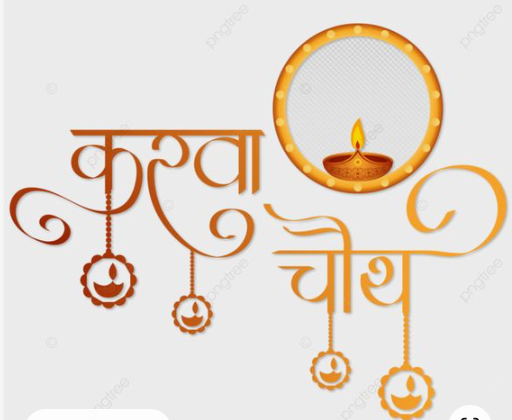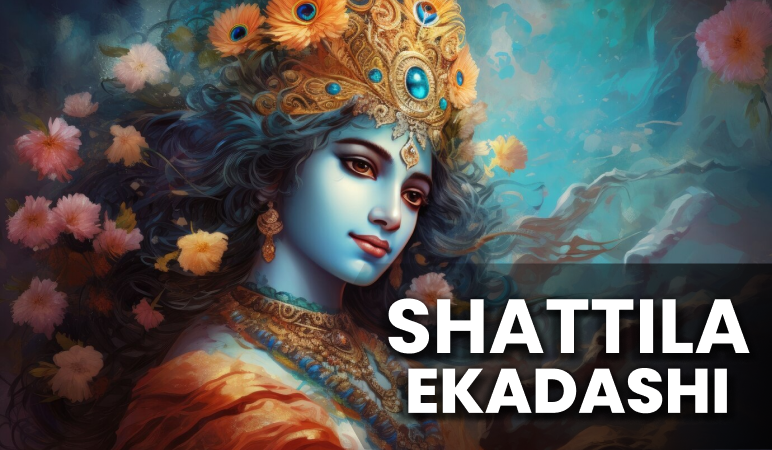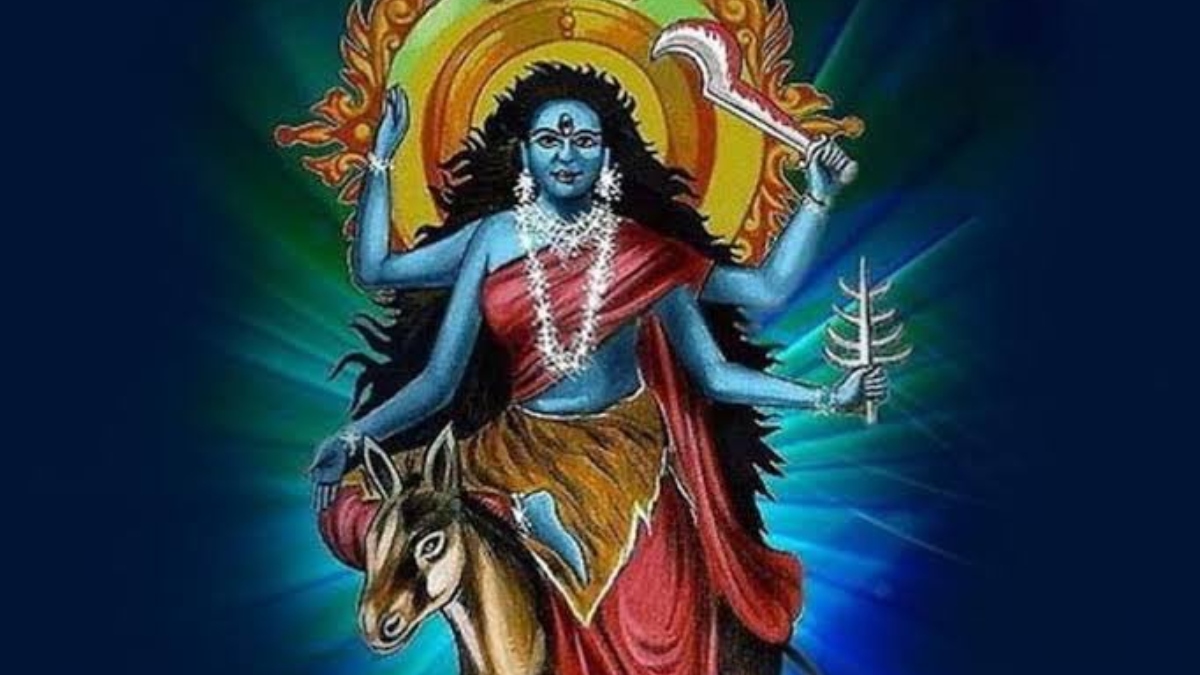Karwa Chauth 2023: Tithi, Moon Rising Time, Puja Vidhi, Story, Significance

In our Sanatan Hindu culture, marriage is a sacred union. It is not merely two people coming together and signing a piece of paper, till it is a matter of comfort. But, here, matches are made in heaven. To strengthen that bond and cherish the relationship, we observe different festivals and rituals, be it Hartalika Teej, Hariyali Teej or Karvachauth. Married Hindu women observe these festivals and vrat to ensure the long life of their husbands, their well-being and the prosperity of their families. These Vrats and festivals not only strengthen the love between the two people but have the utmost religious significance as well.
Karwa Chauth
Here, we will be discussing the Karva Chauth. On this day, the married woman performs fast and performs specific rituals to ensure the long life of her “Suhaag” or husband. It is widely celebrated in Northern India. On this auspicious day, married women observe a fast from sunrise until the moonrise. It’s not limited to married women, though – unmarried women also partake in this festival, fervently praying in the hopes of finding an ideal life partner.
Karva Chauth falls on the fourth day of the dark fortnight, known as Krishna Paksha or the waning phase of the moon. The term ‘Karva’ signifies an earthen pot, and ‘Chauth’ denotes the fourth. The use of the ‘Karwa,’ or earthen pot, is symbolic as it represents the vessel through which women offer water (jal) to the Moon during the ritual. Additionally, this festival marks the transition of seasons, signalling the end of the harvest season.
Karwa Chauth 2023 Tithi and Date
In 2023, Karwa Chauth will be observed on 1st November 2023.
- Upvasa Period: 6.33 am to 8.15 pm
- Chaturthi Tithi Starts: October 31st, 9.30 pm
- Chaturthi Tithi Ends: November 1st, 9.19 pm
- Karwa Chauth Puja: 5.36 pm to 6.54 pm; it’s 8.15 pm when the moon rises in the meantime.
On November 1, 2023, the Karwa Chauth fast will be observed following the moonrises of Udaya Tithi and Chaturthi. The fast will be from 06:33 am to 08:15 pm. The Krishna Paksha Chaturthi date for this year falls in the Kartik month on Tuesday, October 31, at 9:30 p.m., and concludes on Wednesday, November 1, at 09:19 p.m., according to the Vedic Hindu calendar.
Karwa Chauth Timing region wise
- Jaipur: 5.44 p.m. to 7.02 p.m.
- Bangalore: 5.42 p.m. to 6.56 p.m.
- Bangalore: 4.59 p.m. to 6.15 p.m.
- Hyderabad: 5.45 p.m. to 7 p.m.
- Ahmedabad: 6 p.m. to 7 p.m.
- Noida: 5.30 to 6.53 p.m.
- Pune: 6.02 to 7.17 p.m.
- Delhi: 5.36 to 6.54 p.m
To know about the exact timing at your specific place or location, you can speak to pundits and astrologers at NamoAstro.
Karwa Chauth 2023 Puja Vidhi
For successful completion of the Karvachauth Vrat, follow the below steps:
While performing the puja of Karva Chauth fast, a pot filled with water is kept on a plate and a bowl filled with wheat is also kept.
On this day, for worship, an idol of the Moon and below it Bhagwan Shiva and Kartikeya is made on the wall or paper and this idol is worshipped by women.
After rigorous penance throughout the day, when the moon is seen at night, this fast is completed after worshipping the moon.
It is important to offer “Argha” to the moon in the night worship during the Karva Chauth fast.
Now after completing her fast, the woman consumes water and food at night.
Following the puja, the women break their fast by gazing through a sieve at the moon and light diyas as an act of devotion to the moon.
They take a sip of water from their husband’s hands.
Once a woman starts observing this fast, she has to observe this fast for the rest of her life.
Once the married woman observes this fast, she can consume fruits, water, and other things during the fast at her convenience.
Karva Chauth is the most important Vrat for married women, thus, it is important to do it correctly. To get a detailed explanation regarding the Puja Vidhi, you can speak to pundits and astrologers at NamoAstro.
Story Behind Karwa Chauth
There once was a beautiful queen by the name of Veervati. She was the lone sister of seven devoted and kind brothers. She observed her first Karwa Chauth fast following her marriage. Her brothers watched Veervati undergo the severe fasting regimen and anxiously awaited the rising of the moon, which deeply unsettled her. Ultimately, they used fire to create a mirror-like image through the leaves of the pipal tree, and they urged her sister to break the fast.
Veervati requested that the wives of her brothers also break the fast. However, they informed her that the moon had not risen and that her brothers were lying to her. Veervati broke the fast since she didn’t think their remarks were serious. The moment she ate, she had some unfavourable omens.
She discovered hair with her first mouthful, sneezed with her second bite, and learned of her husband’s passing with her third bite. She began to feel guilty and held herself responsible for her husband’s death after discovering his corpse. She began to weep.
Devi Indrani, Lord Indra’s wife, arrived at this point to comfort Veervati, who begged Devi to revive her husband. However, the Devi informed her that her husband passed away unexpectedly because she had broken the fast on Karwa Chauth without making an “argha” (a lunar offering).
To get her husband back, Indrani counselled Veervati to keep the Chauth fast all year long and to observe the Karwa Chauth fast. Veervati followed the Devi’s advice. Veervati eventually regained her husband after doing “punya karma” or good karma.
Significance of Sargi and Baya in Karwa Chauth
Women eat Sargi, a pre-dawn meal, before the commencement of the fast. It is usually made up of a mix of fruits, sweets, and savoury foods and is made by the mother-in-law or any other senior female relative. The women receive the energy and nourishment they need from the meal to last them through the demanding fasting day. The women typically receive the Sargi as a token of affection and care from their mother-in-law or spouse.
In contrast, Baya is a gift basket that the mother-in-law gives to her daughter-in-law. Typically, the basket is stocked with snacks, fruits, makeup, and other necessities for the fast. The Baya represents the relationship between the two families and is given to the daughter-in-law as a gesture of appreciation and love. They are a means of expressing love, concern, and respect for the daughter-in-law and both have great emotional significance.
In addition, Sargi and Baya have spiritual significance. The women get the stamina and energy to complete the day’s fast thanks to the pre-dawn meal of Sargi. By doing this, you can appease the gods and ask for their blessings on a fulfilling marriage. On the other side, baya is a means of asking the home goddess and the family’s ancestors for blessings.
Husband and wife have a strong sense of love, dedication, and commitment because of the Karwa Chauth Pooja. Fasting is more than just a custom; it’s a lovely way for life partners to show their love, care, and trust for one another. It also acts as a reminder of how important self-control, sacrifice, and patience are to a happy marriage.
Frequently Asked Questions
Q: Which mantra should be chanted while donating Karwa?
A: करकं क्षीरसम्पूर्णा तोयपूर्णमथापि वा। ददामि रत्नसंयुक्तं चिरज्जीवतु मे पतिः॥
Translation – It means ” O milk filled Karwe with precious stones; I donate you so that my husband is long-lived









